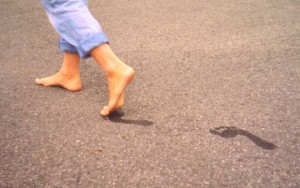Contributor: Karl Bremer B.S., LCDC, Nova Recovery Center
 When it comes to addicts finding a way out of addiction, there are a myriad of hurdles that can appear as difficult to navigate as landmines, mountains, and dead ends.
When it comes to addicts finding a way out of addiction, there are a myriad of hurdles that can appear as difficult to navigate as landmines, mountains, and dead ends.
Today there are more treatment centers offering hope and healing than ever before. If the addict is willing, humbled, receptive, and hurting enough to warrant the desire for change, then the first hurdle has been cleared.
Most Common Barriers
A Barrier is “a circumstance or obstacle that keeps people or things apart or prevents communication or progress.” As an admissions counselor, one barrier facing immediate admission for clients seeking help was the ability to pay for treatment. Finances are a huge barrier, and with no guarantee of absolute recovery, this fear can be paralyzing for the addict and the family, who are often the payees on the hook for services.
More often than not, the family is desperate and hurting enough to clear this hurdle with hope for a better tomorrow, or at least a good night’s sleep once the addict is admitted. Money does not have to stop an addict from getting help.
For addicts serious about getting help, multiple programs offer scholarships, state funded beds are numerous, and insurance companies help supplement costs, opening doors today for addicts who never would have been able to finance such a venture. If the addict is ready to get help, he or she can find a way!
Fear of Treatment Itself
 Fear of treatment itself is probably the second most common barrier preventing action. Fear of change, facing past hurts, and fear of the unknown are an addict’s constant companion. “Can I smoke? Can I play with the horses? Do I have to attend groups? Can I keep my cell phone?”
Fear of treatment itself is probably the second most common barrier preventing action. Fear of change, facing past hurts, and fear of the unknown are an addict’s constant companion. “Can I smoke? Can I play with the horses? Do I have to attend groups? Can I keep my cell phone?”
Addicts struggle with fear of everything, and once this surfaces, it can be very difficult for the addict to see through these fears and surrender to trusting trained, educated, experienced, committed professionals. These professionals offer to walk hand-in-hand with clients through all their fears, empowering them to slay perceived unknown giants (which turn out to be much smaller once crossing the threshold of the admissions office).
Surrender is the key to clearing this hurdle. It is also important to trust the staff to ensure the process of healing is a collective journey, not a lonely walk of abandonment or isolation.
Dealing with Pride
Coming in at number three for most common barrier is pride – having to admit there is a problem and the addict is no longer in control of it. It’s hard to admit to others the depth of our failures, the pain of our past, and the shame of the damage we have inflicted on others.
Guilt and shame ride shotgun with these fears, and if you add some “uniqueness” to the recipe – now you have a real barrier. Clients often overcome this by developing the willingness to look in the mirror and acknowledge the pain and depravity of being lost, hopeless, beaten, worn out, exhausted, and overwhelmed.
Shame is the bath water addicts feel the safest in. Shame keeps us chained up and locked away from the people we love the most. Pride is the opposite of shame, and may addicts hold on for dear life to the last remnants of pride, somehow thinking they can still use one more time and it will be different. The willingness to finally trust and take the leap of faith is kryptonite for pride and shame, and it is crucial to overcoming this barrier.
Lack of Faith in the Future
 One of the most difficult remaining barriers is the lack of faith for a better tomorrow. Many addicts have tried multiple treatment centers, 12 step meetings, and countless hours of lecture from family, friends, and counseling professionals. The message in the head of an addict, “It won’t work for me,” or “I always relapse.”
One of the most difficult remaining barriers is the lack of faith for a better tomorrow. Many addicts have tried multiple treatment centers, 12 step meetings, and countless hours of lecture from family, friends, and counseling professionals. The message in the head of an addict, “It won’t work for me,” or “I always relapse.”
Negative self talk is the playground for the mind of an addict. Lack of faith that this time will be different gets trapped between the ears of an addict and it is very difficult to dislodge. The antidote for this barrier is simply faith.
But faith without works is dead, and so often the addict is looking for the quick fix to make the pain stop. With faith, there must be action. Faith and hope are the two basic components that are critical for the addict to see in others, not so much themselves, but in others who are further down the road and who have trampled this negative and destructive barrier that paralyzes the addict from moving forward.
Myths about Barriers
Let me clarify and set the record straight on a few myths regarding overcoming barriers to sobriety. First, the “They must hit rock bottom” myth. Not true, addicts can step off the elevator at many different floors, and willingness to step off may prevent the elevator from hitting ‘rock bottom.’ Another myth, “They must not want to change.”
Not true, I know for years in my addiction that desire, willingness, and pain motivated a desire to change, but the negative self-talk blocked the help being offered. Addicts are notorious renegades who are convinced they are so “unique” that nothing will work. Lastly, “They must not love us enough,” myth.
 This one is so not true and the hardest to understand. If love cured addiction, I would be a pastry chef eating cupcakes all day. Love is the ultimate game changer, and addicts are the most difficult to love. Love is the component that facilitates change, melts hearts of pride, moves the mountains of willingness, provides a foundation to build a new sober life, and spurs people to action against even the tallest odds. Love is beyond measure, knows no limits, and reminds the addict to never give up.
This one is so not true and the hardest to understand. If love cured addiction, I would be a pastry chef eating cupcakes all day. Love is the ultimate game changer, and addicts are the most difficult to love. Love is the component that facilitates change, melts hearts of pride, moves the mountains of willingness, provides a foundation to build a new sober life, and spurs people to action against even the tallest odds. Love is beyond measure, knows no limits, and reminds the addict to never give up.
Hate the disease.
Love the addict.
Community Discussion – Share your thoughts here!
What barriers have your or your loved one faced in finding the path out of addiction? How were these barriers overcome on your road to recovery?
The opinions and views of our guest contributors are shared to provide a broad perspective of addiction. These are not necessarily the views of Addiction Hope, but an effort to offer discussion of various issues by different concerned individuals.
Last Updated & Reviewed By: Jacquelyn Ekern, MS, LPC on July 7th, 2015
Published on AddictionHope.com
